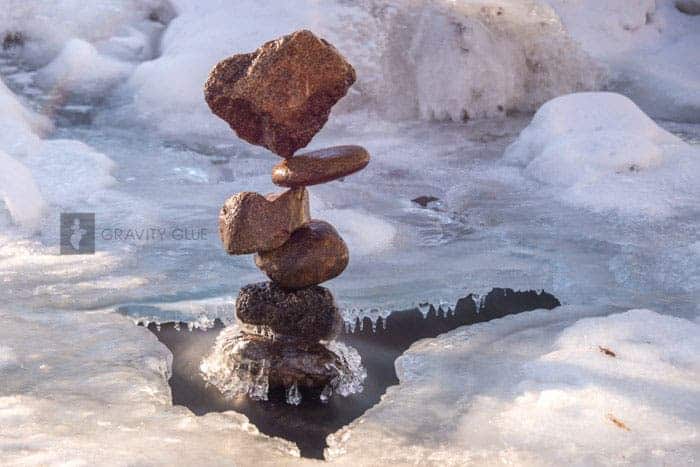If life is a balancing act, then I hope it looks like Michael Grab‘s work. The artist and photographer first dabbled into rock balancing in 2008 while exploring the beautiful landscape of Boulder Creek, Colorado. Since then, he’s come a very long way.
Grab finds the process spiritual and therapeutic – it has become a source of creative passion and and a way to find his inner balance.
“Bottom Line… it’s a fun way to relax, release stress, play, create… learn… all while challenging my skills and dabbling with countless possibilities”, he writes.
As Grab explains on his website Gravity Glue:
Balance requires a minimum of three contact points. Luckily, every rock is covered in a variety of tiny to large indentations that can act as a natural tripod for the rock to stand upright, or in most orientations you can think of with other rocks. By paying close attention to the vibrations of the rocks, you will start to feel even the smallest “clicks” as the notches of the rocks are moving over one another.
Be sure to check him on all his channels for more spectacular and intriguing rock balancing.
Michael Grab/Gravity Glue
Website | Facebook | YouTube | Instagram













